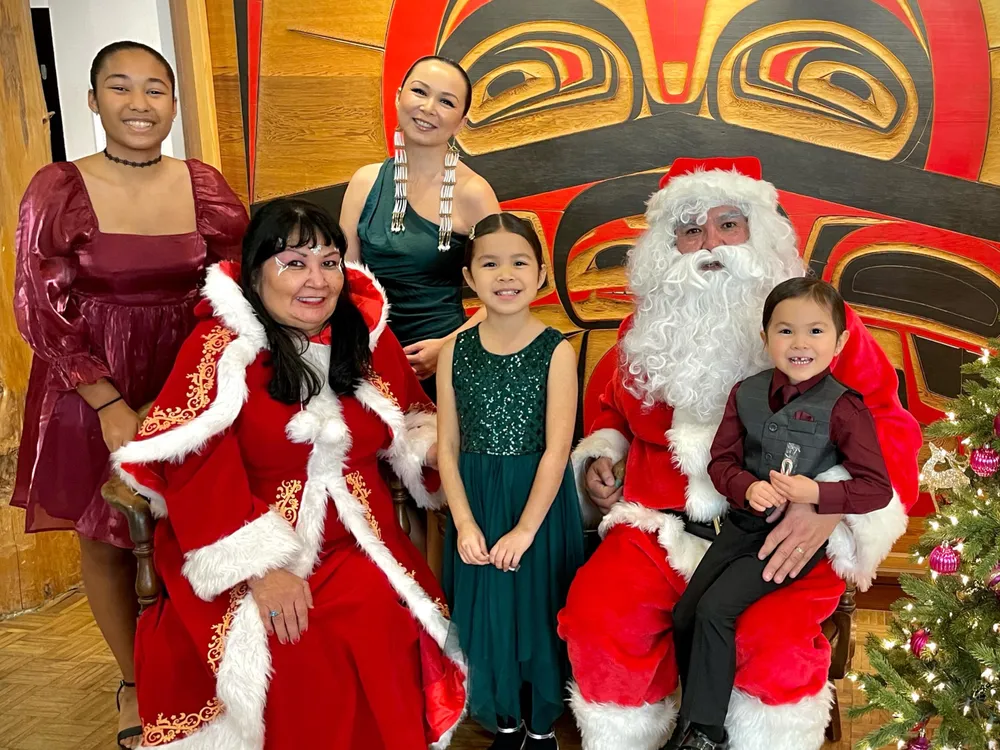
- Details
- By Dennis W Zotigh
The introduction of Christianity to the Americas and the origins of Christmas can be controversial in Native circles. Europeans knowingly replaced Native people’s existing spiritual beliefs with the beliefs taught in the Bible. Cruelty and brutality often accompanied this indoctrination. Yet it is also true that some tribes, families, and individuals embraced the Bible and Jesus’ teachings voluntarily. This complicated history is reflected in the stories below.
_____
[Editor's Note: This article was first published on the Smithsonian Voices website. Used with permission. All rights reserved.]
In many communities and homes, Christian customs are interwoven with Native culture as a means of expressing Christmas in a uniquely Native way. The importance of giving is a cultural tradition among most tribes. Even in times of famine and destitution, Native people have made sure their families, elders, and orphans were taken care of. This mindset prevails into the present. Gift-giving is appropriate whenever a tribal social or ceremonial gathering takes place.
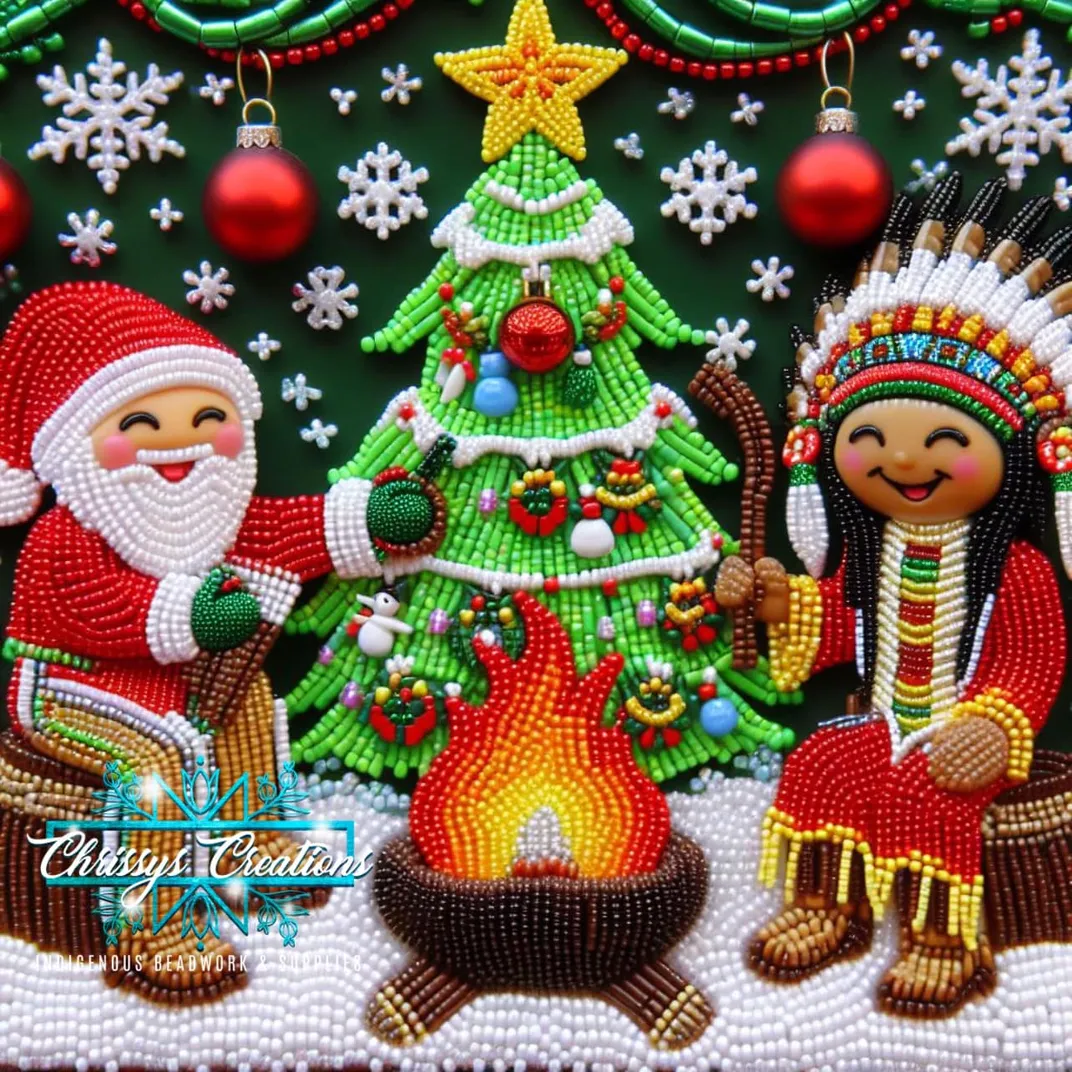
AI computer generated Native Christmas art by Chrissy Rhoads (Lumbee). To view more photos of bead art and Native craft supplies visit www.chrissyscreation.com (Photo/Courtesy of Chrissy Rhoads)
All throughout Indian Country, Native people have gathered in churches, missions, and temples to celebrate the birth of Jesus Christ by singing carols and hymns in their Native languages. In some churches, the story of Jesus’ birth is recited in Native languages. Various Native churches also host Nativity plays using Native settings and actors to re-enact the birth of Jesus Christ. Among Catholics, Christmas Eve Mass traditionally begins in Indian communities at midnight and extends into the early hours of Christmas Day. In tipis, hogans, and houses, Native American Church members also hold Christmas services, ceremonies that begin on Christmas Eve and go on all night until Christmas morning.
 Make A Donation Here
Make A Donation Here
Native Christmas Music
Music played an important part in converting Native people, establishing their practice of worship, and teaching them how to celebrate the Christmas season. Perhaps the earliest North American Christmas carol was written in the Wyandot language of the Huron-Wendat people. “Jesous Ahatonhia” (“Jesus, He is born”)—popularly known as Noël huron or the Huron Carol—is said by oral tradition to have been written in 1643 by the Jesuit priest Jean de Brébeuf.
In contemporary times, traditional powwow singing groups have rearranged Christmas songs to appeal to Native audiences. A humorous example is Warscout’s “NDN 12 Days of Christmas,” from their album Red Christmas. Native solo artists also perform Christmas classics in Native languages. Rhonda Head (Cree), for example, has recorded “Oh Holy Night,” and Jana Mashpee (Lumbee and Tuscarora) has recorded “Winter Wonderland” in Ojibwe.
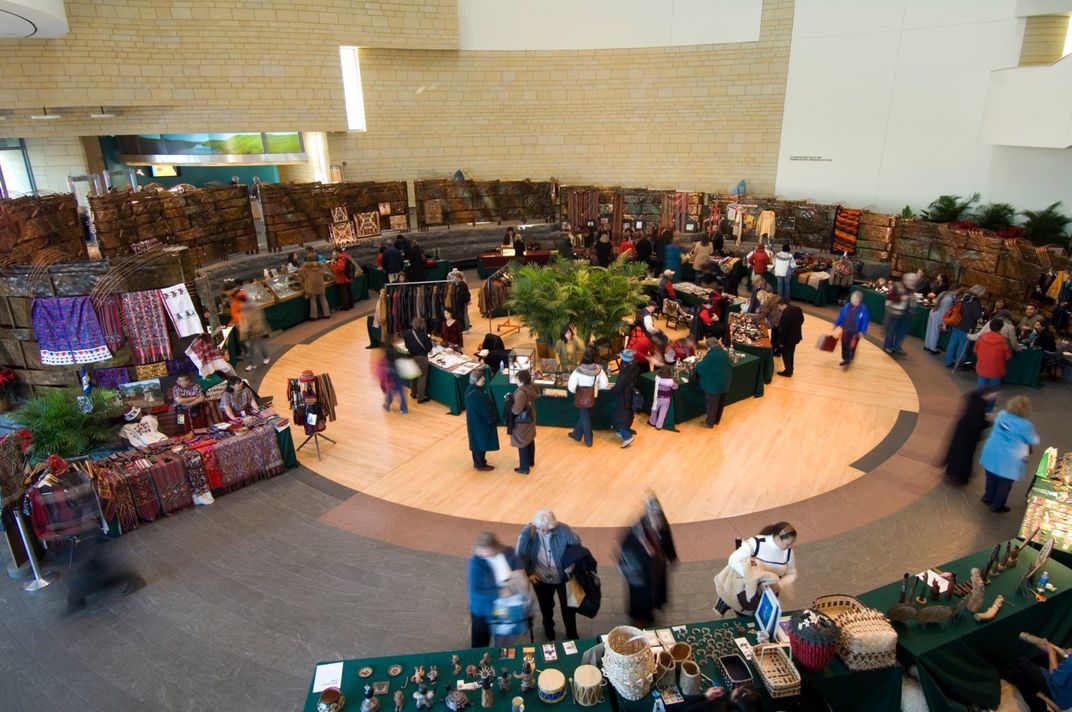
Artistic Traditions
For Native artisans, this is traditionally the busy season as they prepare special Christmas gift items. Artists and craftspeople across the country create beadwork, woodwork, jewelry, clothing, basketry, pottery, sculpture, paintings, leatherwork, and feather work for special Christmas sales and art markets that are open to the public. For 18 years, the National Museum of the American Indian has held its Native Art Market in New York and Washington a few weeks before Christmas. In addition, Native Christmas items can now be purchased directly from Native artisans online.
Native communities host traditional tribal dances, round dances, and powwows on Christmas Eve and Christmas Day. Among the Pueblo Indians of the Southwest special dances take place, such as buffalo, eagle, antelope, turtle, and harvest dances. The Eight Northern Pueblos of New Mexico perform Los Matachines—a special dance-drama mixing North African Moorish, Spanish, and Pueblo cultures—which takes place on Christmas Eve, along with a pine-torch procession.
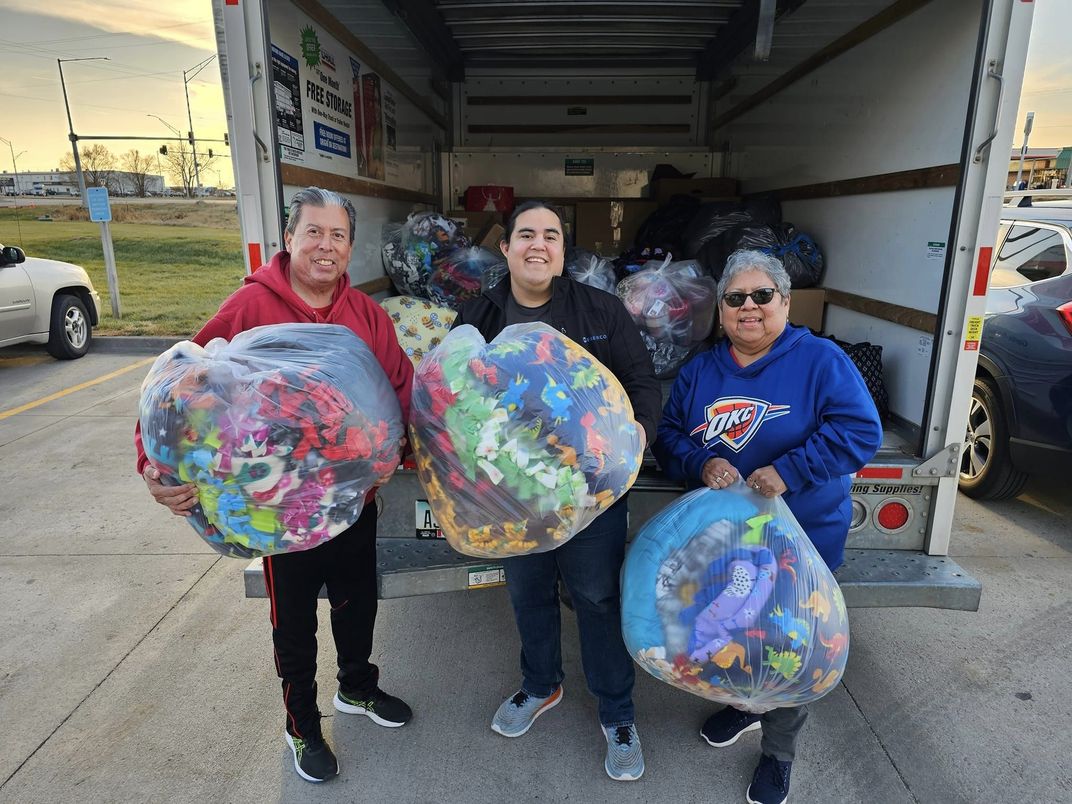
What's on the Christmas dinner menu?
In the same way, traditional Native foods are prepared for this special occasion. Salmon, walleye, shellfish, moose, venison, elk, mutton, geese, duck, rabbit, wild rice, collards, squash, pine nuts, corn soup, red and green chile stews, bread pudding, pueblo bread, piki bread, bannock (fry bread), tortillas, berries, roots, and Native teas are just a few of the things that come to mind. Individual tribes and Indian organizations sponsor Christmas dinners for their elders and communities prior to Christmas. Tribal service groups, churches and warrior societies visit retirement homes, children’s homes, and shelters to provide meals and gifts for their tribal members.
Many tribes begin their Christmas meal by putting out a feast plate or spirit dish for loved ones who have passed. As a special Christmas day of feasting, a prayer is rendered, and food offerings are placed outside of the home on a plate or in the sacred fire for relatives who are no longer with us. It is a sign of respect to allow your remembrances—those who have passed—to eat first. Many are experiencing their first Christmas without a loved one.
What's on the Christmas dinner menu?
In the same way, traditional Native foods are prepared for this special occasion. Salmon, walleye, shellfish, moose, venison, elk, mutton, geese, duck, rabbit, wild rice, collards, squash, pine nuts, corn soup, red and green chile stews, bread pudding, pueblo bread, piki bread, bannock (fry bread), tortillas, berries, roots, and Native teas are just a few of the things that come to mind. Individual tribes and Indian organizations sponsor Christmas dinners for their elders and communities prior to Christmas. Tribal service groups, churches and warrior societies visit retirement homes, children’s homes, and shelters to provide meals and gifts for their tribal members.
Many tribes begin their Christmas meal by putting out a feast plate or spirit dish for loved ones who have passed. As a special Christmas day of feasting, a prayer is rendered, and food offerings are placed outside of the home on a plate or in the sacred fire for relatives who are no longer with us. It is a sign of respect to allow your remembrances—those who have passed—to eat first. Many are experiencing their first Christmas without a loved one.
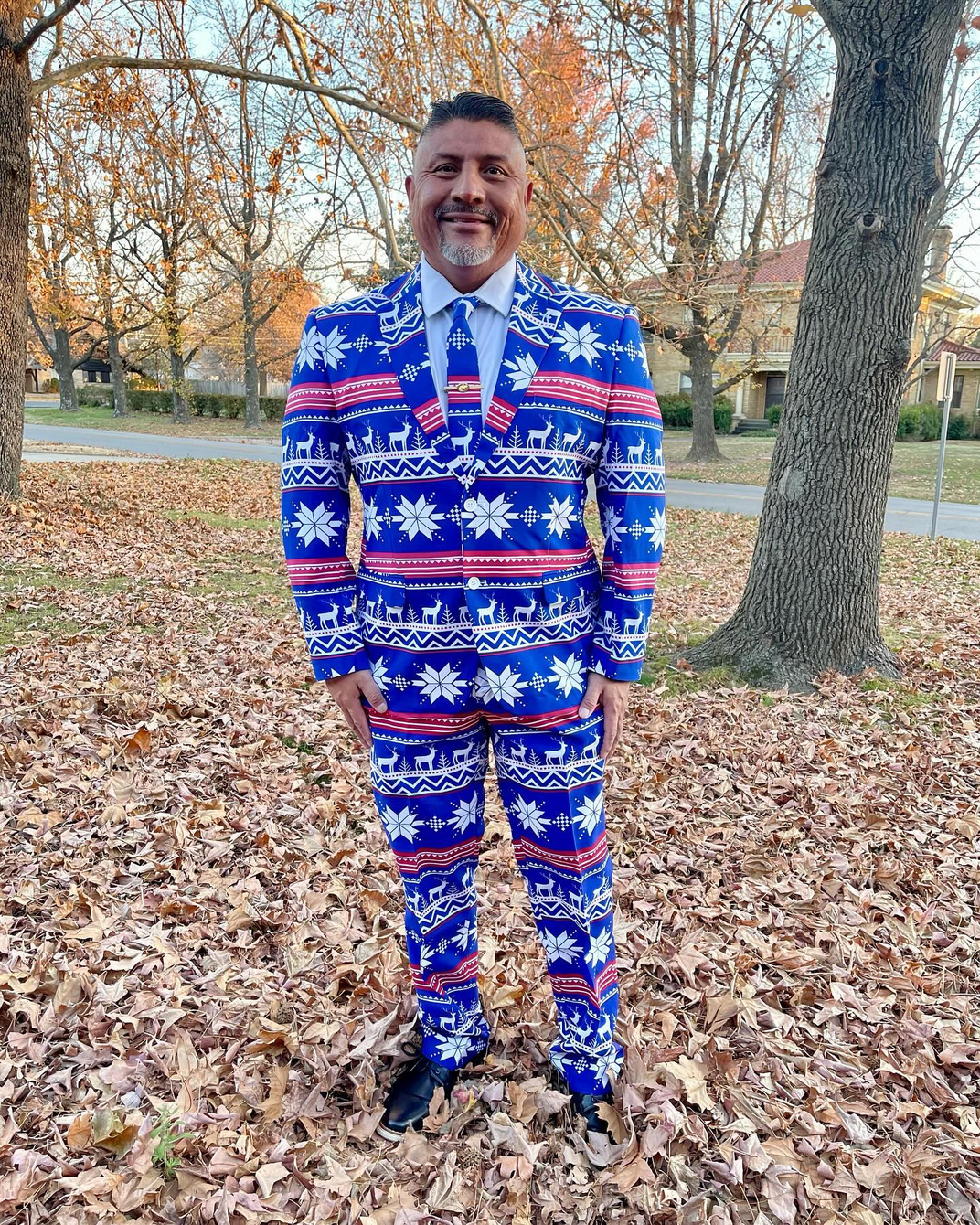
How Natives are celebrating Christmas across Indian Country
According to the Urban Indian Health Institute, nearly seven out of every ten American Indians and Alaska Natives—approximately 71%—live in or near cities, and that number is growing. During the Christmas holidays, many urban Natives travel back to their families, reservations, and communities to reconnect and reaffirm tribal bonds. They open presents and have big family meals like other American Christians. Alternatively, some Natives do not celebrate Christmas but use this seasonal opportunity to celebrate the Winter Solstice through ceremonies and prayer.
This year we asked our Native friends “How are you going to spend Christmas?” Here are some of their answers preceded by the locations they were submitted from:
Chicago, Illinois “I'm Catholic and Native. I'm a pre-k teacher for the Chicago Arch Diocese. Not a whole lot of us, but here I am. I'm spending the holidays with my husband and two daughters. My best friend will be flying in from the Fort Berthold Reservation in New Town, ND to spend the holidays with us."
Taos Pueblo, New Mexico “Look up - Xmas procession and bonfires at Taos Pueblo. Literally thousands attend the event every year.”
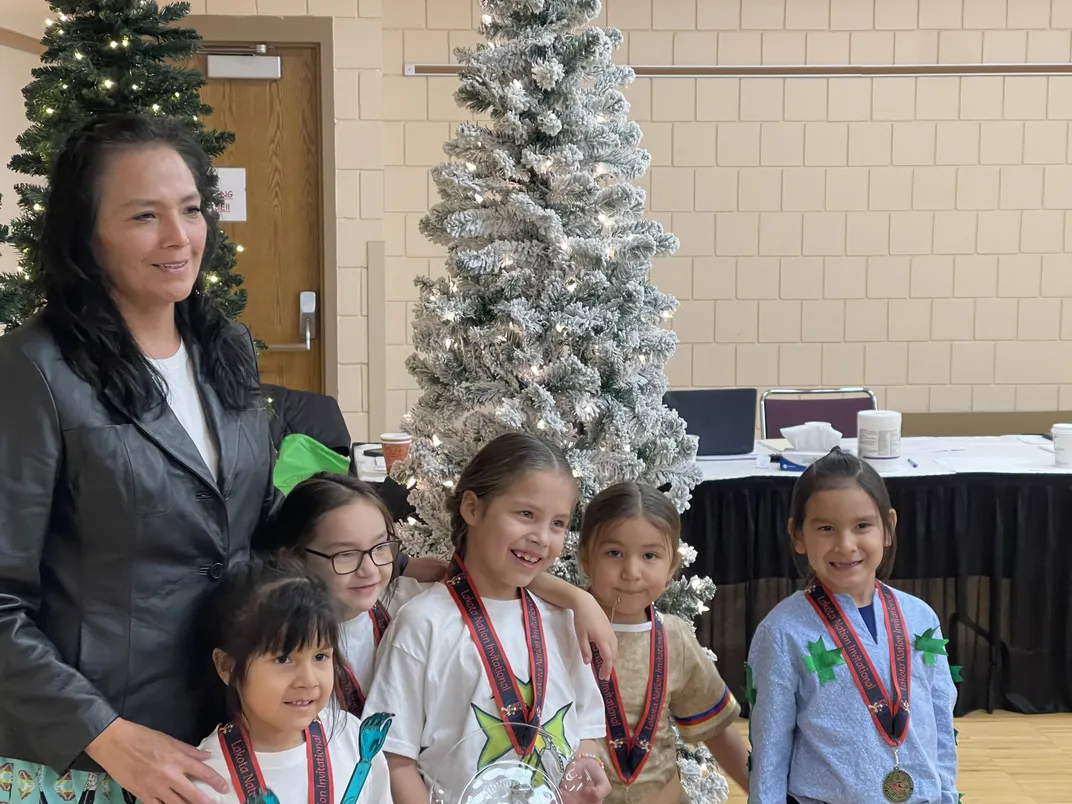
Rapid City, South Dakota – "Coach Janice Dillon (Sicangu Lakota) and her students at the kickoff of winter break for most of our Native area schools. We all gather at Lakota Nation Invitational to celebrate, and then go into family wintertime with Christmas/New Year’s. Basketball, handgames, wrestling, chess, language all take place at this huge event. All local, state and some neighboring state tribal teams participate. CONGRATULATIONS to all the students @ Wakanyeja Tokeyahci!!" (Photo/Courtesy of Madonna Sitting Bear)
Prospect, North Carolina “I’m going to reminisce on the past Christmas Holidays with family and neighbors; think about the love and laughter; and preparation of foods that bring on the aroma that flowing through the air. I'm going to look at my decorative pine tree that came out of a box and elate in all the handmade ornaments. I'll look at the little cornhusk people, and handmade drums, painted snow people, and Seminole tiny pillows. I'll look around and dream of the day that each quilted and knitted stocking and even the energizer bunny stocking will have a secret surprise in each of them. Then after sipping on coffee or tea I will dress and possibly drive an older cousin to be with her sister, although that request has yet to be made. It’s hard to predict what the day will be or what I will do on the Classic Christmas Holiday. I have no attachments and there is just no telling how or what the spirit will create for the day. But, know this, I will be smiling!”
Rock Island, Illinois “Working! I opt to work since I don't have children at home, and there are young nurses who have children who should be with their families.”
San Antonio, Texas “Gonna spend half the day with the in-laws and the other half with my kinfolk. Kinfolk surely some keen folks opening their home to me. I refer to them as Shádí (older sister) dóó Shínaaí (older brother) because that’s the bond that was created after meeting them & after gifting Shádí with a song.”
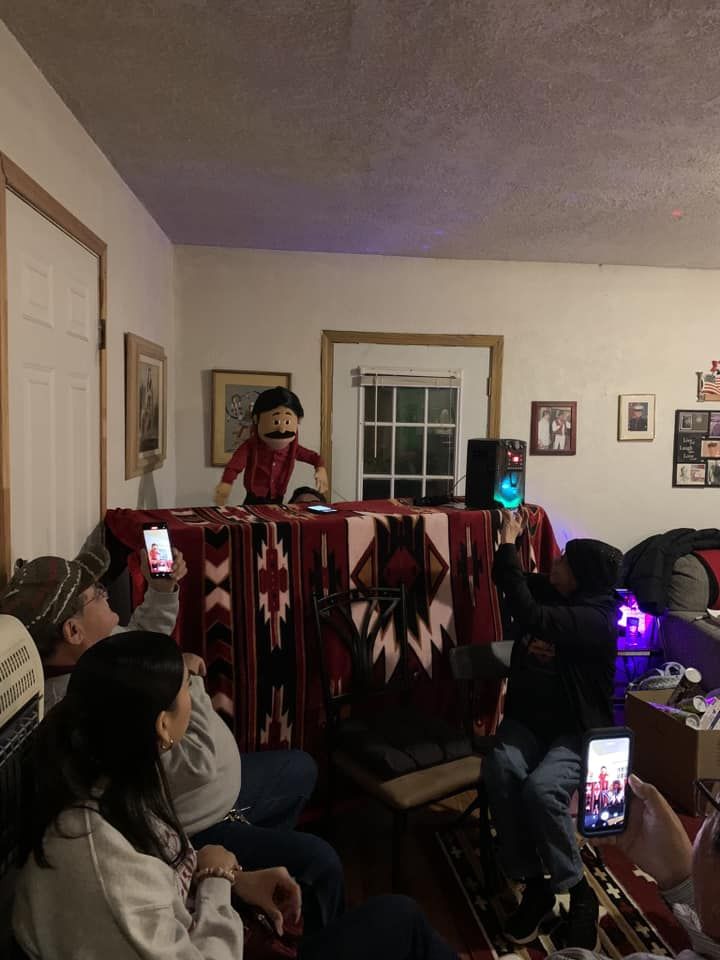
Edmonton, Alberta, Canada “Winter Solstice is the 22, and I will probably cook and pray. Then nikawi/mom is in an Elder’s lodge, we go and spend time with her……four generations, mom, daughter, granddaughter, great grandson.”
Omaha Reservation, Nebraska “Spending it with family in Bartlesville, Oklahoma traveling down from the UMÓⁿHOⁿ (Omaha) Reservation in Nebraska.” Report this ad
Wilmington, Delaware “Fellowship with family. It’s the first year without mom, so we will use the time to remember her.”
Santa Fe, New Mexico “My son and I are going north, back to our Treaty 7 reserve in Canada, to dance in our society dances! We will visit and eat bag lunches! Hopefully Xavier will make the elders happy to see him dance in his back yard! Maybe he might get captured in Crazy Dog but he’s already Baby Beaver Bundle Baby!”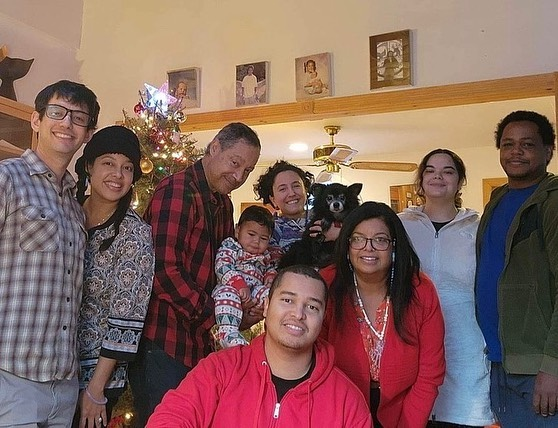
Shinnecock Nation, New York – "This is my family's Christmas photo from last year, 2022. It was exciting to celebrate Benjamin Robin Ballard’s first Christmas and we sang songs in Algonquian to him while unwrapping presents, playing with his baby toys from Santa, and rocking him to sleep. My mom, Denise Silva-Dennis, collects a lot of ornaments (Baby Ben loved the shiny ones) and makes them herself as the workshop coordinator at Ma's House BIPOC Art Studio and recently lead a class to paint glossy wampum shell ornaments. Many of the ornaments, whether they are beaded, gourds, a God’s eye, an antique, a memento from a trip, or celebration of an achievement are gifts and have a special story we share as we find a free branch to hang them. Apparently, once when I was very young, I told my dad to take the tree back because it was too small (to hold all of mom’s ornaments) and he did! That’s the story we joke about every year as we gather to help my parents decorate their Christmas tree." (Photo/Courtesy of Kelly Dennis)
More Stories Like This
50 Years of Self-Determination: How a Landmark Act Empowered Tribal Sovereignty and Transformed Federal-Tribal RelationsTrump Veto Stalls Effort to Expand Miccosukee Tribal Lands
Oneida Nation Responds to Discovery Its Subsidiary Was Awarded $6 Million ICE Contracts
SRMT Child Support Enforcement Unit Delivers Holiday Food Boxes to Families
The Shinnecock Nation Fights State of New York Over Signs and Sovereignty
Help us defend tribal sovereignty.
At Native News Online, our mission is rooted in telling the stories that strengthen sovereignty and uplift Indigenous voices — not just at year’s end, but every single day.
Because of your generosity last year, we were able to keep our reporters on the ground in tribal communities, at national gatherings and in the halls of Congress — covering the issues that matter most to Indian Country: sovereignty, culture, education, health and economic opportunity.
That support sustained us through a tough year in 2025. Now, as we look to the year ahead, we need your help right now to ensure warrior journalism remains strong — reporting that defends tribal sovereignty, amplifies Native truth, and holds power accountable.
 The stakes couldn't be higher. Your support keeps Native voices heard, Native stories told and Native sovereignty defended.
The stakes couldn't be higher. Your support keeps Native voices heard, Native stories told and Native sovereignty defended.
Stand with Warrior Journalism today.
Levi Rickert (Potawatomi), Editor & Publisher
